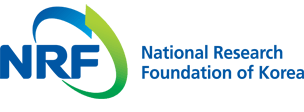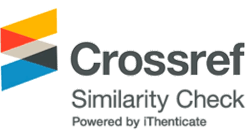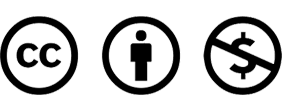Research Article
Achigan-Dako, E.G., E.S. Avohou, C. Linsoussi, A. Ahanchede, R.S. Vodouhe and F.R. Blattner. 2015. Phenetic characterization of Citrullus spp. (Cucurbitaceae) and differentiation of egusi-type (C. mucosospermus). Genet. Resour. Crop Evol. 62: 1159-1179.
10.1007/s10722-015-0220-zAssefa, A.D., O.S. Hur, N.Y. Ro, J.E. Lee, A.J. Hwang, B.S. Kim, J.H. Rhee, J.Y. Yi, J.H. Kim, H.S. Lee, J.S. Sung, M.K. Kim and J.J. Noh. 2020. Fruit morphology, citrulline, and arginine levels in diverse watermelon (Citrullus lanatus) germplasm collections. Plants 9(9):1054.
10.3390/plants909105432824928PMC7569901Boyhan, G.E., J.D. Norton, B.R. Abrahams and H.H. Wen. 1994. A new source of resistance to anthracnose (race 2) in watermelon. Hort. Sci. 29:112-112.
10.21273/HORTSCI.29.2.111Byrd-Masters, L.C. 2018. Sensitivity of Colletotrichum orbiculare isolates in Virginia watermelon to thiophanate-methyl, pyraclostrobin, and prothioconazole. Department of Plant Pathology, Ph.D. Thesis, Virginia Polytechnic Institute and State University, USA.
Correa, E., K. Crosby and S. Malla. 2021. Optimizing a seedling screening method for anthracnose resistance in watermelon. Plant Health Progress 22(4):536-543.
10.1094/PHP-04-21-0077-RSDariush, S., M. Darvishnia, A.A. Ebadi, F. Padasht-Dehkaei and E. Bazgir. 2020. Screening rice genotypes for brown spot resistance along with yield attributing characters and its association with morphological traits. J. Crop Prot. 9(3):381-393.
Desta, K.T., Y.A. Jeon, M.J. Shin, Y.M. Choi, J. Yi and H. Yoon. 2024. Univariate and multivariate analysis of phenotypic traits in mung beans reveals diversity among Korean, Indian, and Chinese accessions. Korean J. Plant Res. 37(3):270-306.
Dutta, S.K., C.V. Hall and E.G. Heyne. 1960. Observations on the physiological races of Colletotrichum lagenarium. Botanical Gazette 121:163-166.
10.1086/336061Egea-Gilabert, C., G. Bilotti, M.E. Requena, M. Ezziyyani, J.M. Vivo-Molina and M.E. Candela. 2008. Pepper morphological traits related with resistance to Phytophthora capsici. Biologia Plantarum 52:105-109.
10.1007/s10535-008-0019-2Egel, D.S. and C. Marchino. 2018. Evaluation of systemic fungicide timing for the control of anthracnose on watermelon, 2017. Plant Dis. Manag. Rep. 12:V049.
Elbekkay, M., H. Hamza, M.H. Neily, N. Djebali and A. Ferchichi. 2021. Characterization of watermelon local cultivars from Southern Tunisia using morphological traits and molecular markers. Euphytica 217:1-15.
10.1007/s10681-021-02809-9Food and Agriculture Organization (FAO). 2023. Agricultural Production Statistics 2000-2022, FAOSTAT Analytical Brief Series No. 79. FAO, Rome, Italy. pp. 9-10.
Gichimu, B.M., B.O. Owuor and M.M. Dida. 2008. Assessment of four commercial watermelon cultivars and one local landrace for their response to naturally occurring diseases pests and non-pathogenic disorders in sub-humid tropical conditions. J. Agric. Biol. Sci. 3(5 and 6):32-43.
Goode, M.J. 1958. Physiological specialization in Colletotrichum lagenarium. Phytopathology 48:79-83.
Goode, M.J. and N.N. Winstead. 1957. Variation in pathogenicity of Colletotrichum lagenarium. Phytopathology 47:13.
Huh, Y.C., H.S. Choi, I. Solmaz, N. Sari and S. Kim. 2014. Morphological characterization of Korean and Turkish watermelon germplasm. Korean J. Agric. Sci. 41(4):309-314.
10.7744/cnujas.2014.41.4.309Huh, Y.C., K.H. Hong, H.C. Ko, K.S. Park, D.K. Park, J.S. Lee, M.C. Cho, S.Y. Lee, K.D. Ko and W.M. Lee. 2010a. Breeding of a mid-late maturing watermelon cultivar, 'Hanbit' with resistant to anthracnose race 3. Kor. J. Breed. Sci. 42(6):699-702 (in Korean).
Huh, Y.C., K.H. Hong, H.C. Ko, K.S. Park, D.K. Park, J.S. Lee, M.C. Cho, S.Y. Lee, K.D. Ko and W.M. Lee. 2010b. Breeding of a mid maturing watermelon cultivar, 'Hangyeol' with resistance to anthracnose race 3. Kor. J. Breed. Sci. 42(6):695-698 (in Korean).
Iqbal, A., B. Alam, R. Iqbal, M.A. Binobead, M.S. Elshikh, T. İzgü and T. Ahmed. 2024. Characterization of brown rust resistance in bread wheat using yield related morphological indices. Genet. Resour. Crop Evol. 1-13.
10.1007/s10722-024-02141-wJang, Y.J., M. Seo, C.P. Hersh, S.J. Rhee, Y. Kim and G.P. Lee. 2019. An evolutionarily conserved non-synonymous SNP in a leucine-rich repeat domain determines anthracnose resistance in watermelon. Theor. Appl. Genet. 132:473-488.
10.1007/s00122-018-3235-y30446794Jenkins, S.F., N.N. Winstead and C.L. McCombs. 1964. Pathogenic comparison of three new and four previously described races of Glomerella angulata var. orbiculare. Plant Dis. Rep. 48:619-623.
Keinath, A.P. 2017. Anthracnose. In Keinath, A.P., W.M. Wintermantel and T.A. Zitter. (eds.), Compendium of Cucurbit Diseases and Pests, 2nd ed., The American Phytopathological Society, St. Paul, MN (USA). pp. 54-55.
10.1094/9780890545744Keinath, A.P. 2018. Minimizing yield and quality losses in watermelon with multi-site and strobilurin fungicides effective against foliar and fruit anthracnose. Crop Protection 106:72-78.
10.1016/j.cropro.2017.12.012Kiptoo, G.J., M.G. Kinyua, L.G. Matasyoh and O.K. Kiplagat. 2020. Morphological traits associated with anthracnose (Colletotrichum lindemuthianum) resistance in selected common bean (Phaseolus vulgaris L.) genotypes. Afr. J. Plant Sci. 14(2):45-56.
10.5897/AJPS2019.1909Layton, D.V. 1937. The Parasitism of Colletotrichum lagenarium (Pass.) Ell. and Halst. Iowa Agricultural Experiment Station Research Bulletin 223:37-67. Iowa State College of Agriculture and Mechanic Arts, Ames, IA, USA.
Love, S. and B. Rhodes. 1988. Single gene control of anthracnose resistance in Citrullus? Cucurbit Genet. Coop. Rep. 11: 64-67.
Matsuo, H., Y. Ishiga, Y. Kubo and Y. Yoshioka. 2022. Colletotrichum orbiculare strains distributed in Japan: race identification and evaluation of virulence to cucurbits. Breeding Science 72(4):306-315.
10.1270/jsbbs.2201136699825PMC9868334Mengistu, G., H. Shimelis, M. Laing, D. Lule and I. Mathew. 2020. Genetic variability among Ethiopian sorghum landrace accessions for major agro-morphological traits and anthracnose resistance. Euphytica 216(7):113.
10.1007/s10681-020-02650-6Patel, T. 2019. Studies on anthracnose resistance in watermelon germplasm. Department of Horticultural Science, Ph.D. Thesis, North Carolina State University, Raleigh, NC (USA).
Patel, T., L.M. Quesada-Ocampo, T.C. Wehner, B.P. Bhatta, E. Correa and S. Malla. 2023. Recent advances and challenges in management of Colletotrichum orbiculare, the causal agent of watermelon anthracnose. Horticulturae 9:1132.
10.3390/horticulturae9101132Pradeep, M., K. Eraivan Arutkani Aiyanathan, K. Kalpana, M. Shanti and K. Senthil. 2022. Biocontrol potential of endophytic Pseudomonas stutzeri isolated from watermelon (Citrullus lanatus Thunb) against Colletotrichum orbiculare causing anthracnose disease in watermelon. Pest Manag. Hort. Ecosyst. 28:175-182.
10.5958/0974-4541.2022.00019.4Renner, S.S., S. Wu, O.A. Pérez-Escobar, M.V. Silber, Z. Fei and G. Chomicki. 2021. A chromosome-level genome of a Kordofan melon illuminates the origin of domesticated watermelons. PNASU. 118(23):e2101486118.
10.1073/pnas.210148611834031154PMC8201767Rural Development Administration (RDA). 2013. Manual on investigation of characteristics and management of genetic resources: watermelon. RDA, Jeonju, Korea, pp. 28-37 (in Korean).
Sahin, N. 2024. Morphological characterization of some local watermelon (Citrullus lanatus L.) genotypes of Turkey. Int J. Life Sci. Biotechnol. 7(1):28-36.
10.38001/ijlsb.1416465Shim, S.A., K.S. Jang, Y.H. Choi, J.C. Kim, H.T. Kim and G.J. Choi. 2013. Resistance degree of cucurbits cultivars to Colletotrichum orbiculare. Kor. J. Hort. Sci. Technol. 31(3):371-379 (in Korean).
10.7235/hort.2013.12163Solmaz, I. and N. Sari. 2009. Characterization of watermelon (Citrullus lanatus) accessions collected from Turkey for morphological traits. Genet. Resour. Crop Evol. 56:173-188.
10.1007/s10722-008-9353-7Sowell, G., B.B. Rhodes, Jr. and J.D. Norton. 1980. New sources of resistance to watermelon anthracnose. J. Amer. Soc. Hort. Sci. 105:197-199.
10.21273/JASHS.105.2.197Suvanprakorn, K. and J.D. Norton. 1980. Inheritance of resistance to race 2 anthracnose in watermelon. J. Amer. Soc. Hort. Sci. 105:862-865.
10.21273/JASHS.105.6.862Szamosi, C., I. Solmaz, N. Sari and C. Bársony. 2009. Morphological characterization of Hungarian and Turkish watermelon (Citrullus lanatus (Thunb.) Matsum. et Nakai) genetic resources. Genet. Resour. Crop Evol. 56:1091-1105.
10.1007/s10722-009-9432-4Wasilwa, L., J. Correll, T. Morelock and R. McNew. 1993. Reexamination of races of the cucurbit anthracnose pathogen Colletotrichum orbiculare. Phytopathology 83:1190-1198.
10.1094/Phyto-83-1190- Publisher :The Plant Resources Society of Korea
- Publisher(Ko) :한국자원식물학회
- Journal Title :Korean Journal of Plant Resources
- Journal Title(Ko) :한국자원식물학회지
- Volume : 37
- No :6
- Pages :607-616
- Received Date : 2024-10-29
- Revised Date : 2024-11-28
- Accepted Date : 2024-11-28
- DOI :https://doi.org/10.7732/kjpr.2024.37.6.607




 Korean Journal of Plant Resources
Korean Journal of Plant Resources







